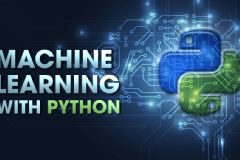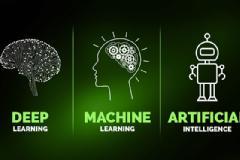These are the topics we will cover:
1. Neural Networks: Understanding the basics of neural networks, including different types like feedforward neural networks, convolutional neural networks (CNNs), recurrent neural networks (RNNs), and their variations like LSTM (Long Short-Term Memory) and GRU (Gated Recurrent Unit).
2. Convolutional Neural Networks (CNNs): CNNs are particularly useful for tasks involving images and spatial data. Learn about their architecture, how they work, and their applications in tasks like image classification, object detection, and image segmentation.
3. Recurrent Neural Networks (RNNs): RNNs are designed to work with sequential data, making them suitable for tasks like natural language processing (NLP), time series prediction, and speech recognition. Understanding how RNNs process sequential data and their limitations like vanishing gradients is crucial.
4. Generative Adversarial Networks (GANs): GANs are a type of neural network architecture used for generating synthetic data, particularly images, that are similar to real data. They consist of a generator and a discriminator network trained adversarially. GANs have applications in image synthesis, image-to-image translation, and more.
5. Autoencoders: Autoencoders are neural networks used for unsupervised learning. They aim to learn efficient representations of input data by compressing it into a lower-dimensional space and then reconstructing the original data from this compressed representation. Variational Autoencoders (VAEs) are a type of autoencoder used for generative modeling.
6. Natural Language Processing (NLP): Learning about architectures like Transformer models (e.g., BERT, GPT) and their applications in NLP tasks.
7. Deep Reinforcement Learning (RL): RL involves training agents to make sequential decisions in an environment to maximize a cumulative reward. Deep RL combines deep learning with RL techniques, enabling agents to learn complex behaviors directly from raw sensory input. Topics include Q-learning, policy gradients, and deep Q-networks (DQN).
8. Transfer Learning: Transfer learning involves leveraging knowledge from one domain or task to improve performance on another related task. Techniques like fine-tuning pre-trained models and domain adaptation are essential in transfer learning.
9. Hyperparameter Optimization: Deep learning models often have many hyperparameters that need to be tuned for optimal performance. Techniques like grid search, random search, and Bayesian optimization are used to find the best hyperparameters efficiently.
10. Model Interpretability and Explainability: Understanding how deep learning models make decisions is crucial, especially in domains like healthcare and finance where model interpretability is essential. Techniques like feature visualization, saliency maps, and model-agnostic methods help in understanding model predictions.









